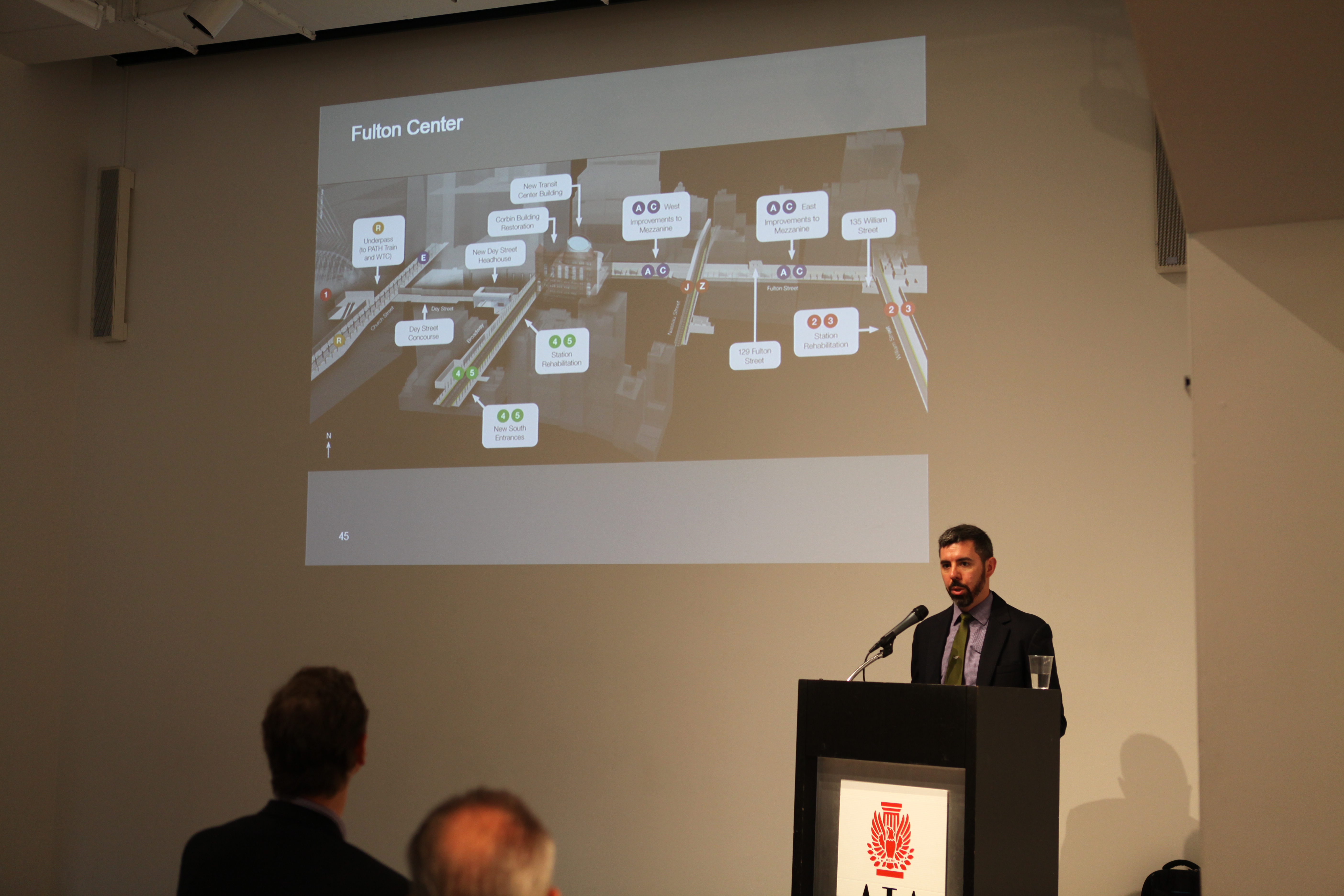by: Eve Dilworth Rosen
Have you had to wait in line to swipe your MetroCard or to climb a set of stairs? Ever felt like you might get pushed off of the edge of the train platform because there were too many people waiting?
It is the job of engineers like Eric Rivers of ARUP to engage these problems and other issues in planning for pedestrians and crowds. On 09.25.15 at a talk hosted by the AIANY Transportation and Infrastructure Committee, Rivers walked us through some case studies of projects he has worked on at ARUP, the software they used at the time, and some of the new innovations now available.
When developing schemes for pedestrian traffic flow, Rivers underlines that you must aim for intuitive design, clarity of process, and ease of movement. The optimized solution takes into account the number of people who will be using a space at peak capacity, as well as user experience. This will help determine the size and shape of the space needed. By looking through the eye of the user, you are better able to make wayfinding as intuitive as possible, minimize the need for signage, and be able to best place any needed directional tools.
The latest and greatest in pedestrian simulation software is Mass Motion, an ARUP-developed product that is now available off the shelf. The math behind even this newest software is based on the formidable 1960s research of John J. Fruin, Ph.D., a specialist in pedestrian traffic analysis and its application to building circulation systems and transportation terminal design. His book, Pedestrian Planning and Design, quantifies the space people need to walk, queue, crowd, and wait.
By way of introduction to the technology behind Mass Motion, Rivers walked the audience through other software ARUP used on previous projects. These included Pedroute for the 2002 redesign of the London Underground and Legion for the 2004 redesign of the Fulton Center transit hub. They then used Mass Motion to model pedestrian flow in the latest Fulton Street station design.
Modeling these days is easy. The difficult issue is instilling the logic and understanding of movement. Most transportation agencies know how many people are getting on and off of their vehicles, but the agencies don’t know where their passengers are going or how they are arriving. One way to gather this data is through user surveys, but engineers and architects need to assume that travelers are acting logically to optimize their travel time.
Event: Pedestrian Planning and Simulation
Location: Center for Architecture, 09.25.15
Speaker: Eric Rivers, Associate Planner, Arup
Organized by: AIANY Transportation and Infrastructure Committee
Sponsored by: Arup








